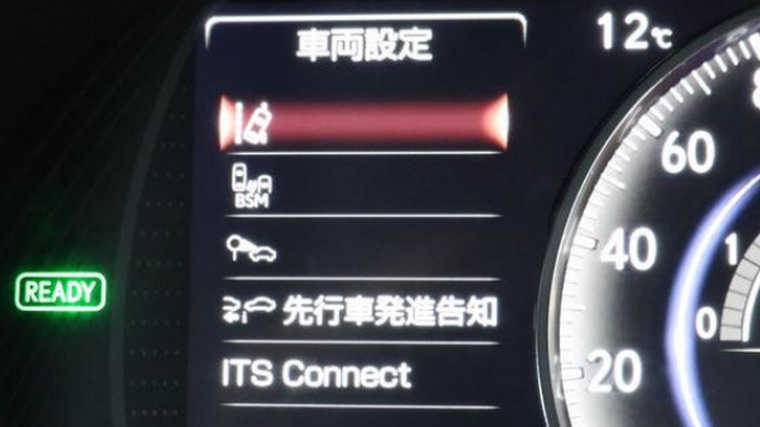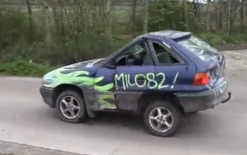Inspections to clampdown on cars with ITS Connect

Damage flags will need to be raised by border-inspection organisations (BIOs) on vehicles with ITS Connect installed that are bound for this country from the start of April.
The Imported Motor Vehicle Industry Association (VIA) says a notice has been issued for the intelligent communications system, which is fitted to some Lexus and Toyota models.
“ITS Connect operates on the 760MHz bandwidth of the radio spectrum, which is reserved for telecommunications in New Zealand,” says Malcolm Yorston, VIA’s technical manager.
“There has been a gazette notice published declaring any other products operating on this bandwidth as prohibited imports, which can be seized by NZ Customs.
“BIOs will be required to identify and damage-flag cars with ITS Connect that are NZTA border-inspected from April 1.”
Yorston adds ITS Connect may be found in Lexus and Toyota cars as detailed in a technical bulletin issued by Waka Kotahi.
These include, but may not be limited to, the following Toyotas from their stated model years onwards – the Prius from 2016, Prius PHV 2016, Crown 2016, Harrier 2018, Alphard 2018, Vellfire 2018 and Noah 2018.
The same applies to the following Lexus models – the RX from 2016, LS 2018, RX 2018, ES 2018, UX 2018.
“Waka Kotahi has instructed that BIOs damage-flag vehicles equipped with ITS Connect from April 1 and asks for proof from a Toyota dealer that the ITS Connect system has been permanently disabled,” adds Yorston.
“The transport agency is confident that permanently disabling the ITS Connect software so the system no longer transmits a signal is sufficient. The hardware does not physically need to be removed.”
Illegal devices
The agency’s bulletin states: “The ITS Connect system fitted to some vehicles originating in Japan operates by broadcasting a signal on the 760MHz frequency. This frequency is not compatible with the licensing framework in New Zealand.
“Under the Radio Communications Act, it is illegal to import or operate a device that operates on this frequency.
“The purpose of the technical bulletin is to define a process for identifying vehicles fitted with ITS Connect systems and how these vehicles need to be processed if an ITS Connect system is fitted.”
The bulletin illustrates the steps BIOs can take to assure they act with due diligence, best endeavours and based on best information available.
“The BIOs, specifically Automotive Technologies Ltd, ATJ, JEVIC, Independent Verification System – and NZ Biosecurity Services – as per requirements will provide data to Waka Kotahi regarding the presence of ITS Connect on vehicles they inspect, subject to prerequisites.
“All reasonable efforts outlined in this process will be made to assure BIOs provide the most accurate information. All responsibility for importing any vehicle remains with the importer.”
Vital checks
To determine if ITS Connect is fitted and operational, two checks must be made. The agency says the first check is on the vehicle’s driver information display (MID or MFD). The second check is on its navigation system.
“In both cases, the inspector will be looking for any indication of settings associated with an active ITS Connect system,” states Waka Kotahi’s bulletin.
“To meet the burden of proof of conclusive evidence, it must be shown the vehicle is not fitted with ITS Connect.
“For a vehicle not fitted with the system, two photos must be provided that show the settings screens for the navigation unit and MID. These photos should also be saved with the BIO’s file.
“A vehicle found to be fitted with an ITS Connect system must have a damage flag placed on it with a note stating ‘ITS Connect fitted’. Any other damage or Takata airbag recall notes must also be added if applicable.
“The owner must take the vehicle to a Toyota or Lexus franchise in Japan to have the system removed. An invoice or receipt from the dealer that shows the chassis number and indicates the system has been removed is acceptable evidence that ITS Connect is no longer fitted.
“A secondary check must be made on both the navigation unit and MID settings to ensure ITS Connect-associated settings are no longer visible.
“A copy of the invoice and photos of the displays on the second inspection must be saved in the vehicle file. A copy of the invoice should be loaded as evidence of the system’s removal.”
VIA members can email questions to info@via.org.nz. For the agency’s technical bulletin in full, click here.





